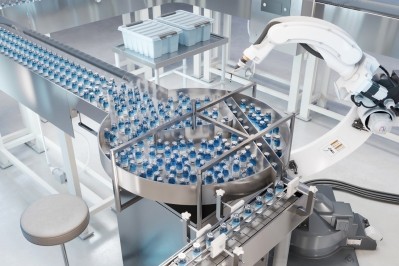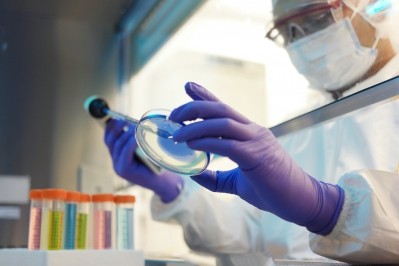Samsung Biologics: How to overcome biopharma industry challenges

BPR: What’s driving demand for biologics production currently?
The continuous innovation of the biotech industry is a major driving force in the rise of biologics production and the remarkable growth of this sector. In addition, the application of biologics to rare and chronic disease treatments has seen demand climb, owing to their targeted mechanisms and efficacy.
This is seen in the meteoric rise in market values, with the biotech industry projected to increase value from $1.2 trillion in 2022 to $3.2 trillion in 2030 and the biologics market from $512 billion in 2022 to $1.2 trillion in 2030 [2].
The biopharma industry is ever-evolving, and responding to the rising need for biologics while addressing capacity issues is a complex task. As a result, biotech companies are increasingly outsourcing their biologics to contract development and manufacturing organizations (CDMOs) to facilitate biologic production.
BPR: How is the industry responding to this rise in demand?
The biopharma industry is constantly adapting in response to changing patient needs, regulatory shifts and government initiatives. To continue providing patients with life-altering products, the industry must remain flexible and address facility-related factors in biologics development.
Firstly, meeting changes in demand. The rapid emergence of biologics has led to shortages in capacity, posing a major challenge for the biologics market, particularly in the monoclonal antibody space. These capacity issues that biologics developers are facing often follow two main profiles: additional demand for products or newly approved products that require large-scale commercial manufacturing.
To address shifts in demand and meet the increasing market needs, specialized sterile processing lines for biologics are essential. Ensuring heightened production capacity is strategically vital to maintaining a strong position in the expanding biotech market.
To meet production needs, developments in bioprocessing technologies, such as single-use systems, continuous manufacturing and process automation, have transformed biologic production. These advances boost efficiency, flexibility, and productivity in biopharma manufacturing. By understanding and strategizing to overcome these obstacles, biotech companies can efficiently navigate the complexities of large-scale biologics production and drive innovation in the sector.
BPR: What manufacturing challenges are biotechs currently facing and how can they solve them?
Biotech companies are currently grappling with various manufacturing challenges, and strategic solutions are essential to overcoming them effectively.
One significant challenge involves biopharma facility design and scalability. To address this, biotech companies should engage experts in facility design and engineering early in the development process. This ensures that sites are purpose-built for biologics production and feature modular and flexible designs that can adapt as demand rises. Additionally, incorporating innovative technologies like single-use systems or continuous manufacturing can further boost scalability and efficiency.
Another challenge relates to the cost of implementing new technologies and enhancing connectivity between disparate computer systems within a company. While these advancements can greatly improve manufacturing processes, they might deter many biotechs from investing. To navigate this issue, biotech firms must carefully assess the potential return on investment and consider long-term benefits when deciding on technology upgrades.
Effective collaboration and strategic approaches are paramount in resolving manufacturing site issues. These strategies not only help biotech companies meet patient needs but also increase capacity and ensure adaptability to shifting regulatory requirements and government initiatives. It is crucial to acknowledge that challenges, including significant financial investments, operational constraints and potential disruptions, may arise throughout this process. Therefore, adopting a well-thought-out strategy is essential to overcome these obstacles and ensure successful biopharmaceutical manufacturing.
BPR: What are the benefits and strategies for biotech companies when it comes to integrating into a biopharma hub?
Location plays a crucial role in the success of a company in any industry and the biopharma sector is no exception. Being situated within a biopharma hub offers numerous strategic advantages for drug developers and CDMOs that specialize in manufacturing biologics. Hubs are often concentrated in specific geographic regions and provide a thriving ecosystem that fosters collaboration, innovation and growth.
A biopharma hub attracts leading biotech and pharma companies, research institutions and academic centers, creating a concentration of industry expertise and talent for recruitment. Facilities located within hubs benefit from proximity to industry leaders, enabling collaborations and strategic alliances, knowledge sharing and access to cutting-edge research and technology. This proximity facilitates partnerships and business opportunities that can drive innovation, accelerate development timelines and enhance the overall competitiveness of the biopharma industry.
BPR: How can biotechs boost their operational capabilities and accelerate product development?
As the biologics industry continues to evolve, biopharma facilities will remain at the forefront of innovation and are vital to the viability of operational capabilities and project speed-to-market for biotechs. The challenge of acquiring sufficient capacity and technical capabilities is increasingly leading biotechs to partner with specialized CDMOs and outsource their manufacturing activities.
Collaboration and partnerships are key to overcoming operational hurdles. Biotech companies can team up with CDMOs to tap into their specialized infrastructures, expertise and resources. These partnerships grant access to top-quality facilities, cutting-edge technologies and experienced staff, bridging capability gaps and speeding up development and manufacturing. CDMOs have therefore become crucial partners for biotech firms, and choosing the right CDMO is pivotal when dealing with facility-related challenges.
A reliable partner can influence development, regulatory compliance and business growth. To make the best choice, assess the CDMO’s technical expertise, track record and experience in similar therapeutic areas. Their past successes and regulatory approvals demonstrate their ability to deliver results. Equally, inspect their quality systems and regulatory compliance to ensure they meet stringent standards like cGMP and hold necessary certifications.
Another critical aspect is the CDMO’s facility infrastructure and scalability. Biotech firms should closely examine their potential partner’s operational capabilities, including cleanrooms, manufacturing capacity, equipment, and technologies. Scalability is vital to accommodate current and future needs and take a project to clinical trials and commercial production.

















